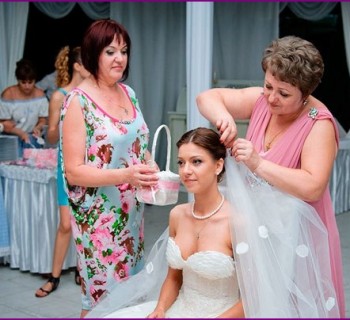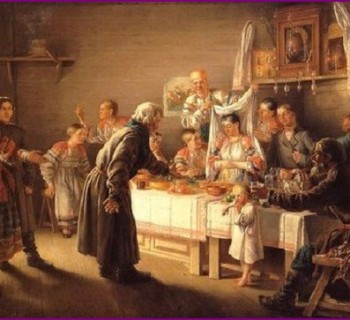Contents
- The sacrament of the wedding ceremony in Russia
- Matchmaking and wedding preparations
- Ancient blessing ceremony
- Wedding feast
- Traditional wedding songs
Weddings that were played several centuries ago are significantly different from today's weddings. Many traditions of the past were preserved, but took other forms, altered, losing their original meaning. Ancient wedding ceremonies in Russia (matchmaking of the bride, bridegroom, blessing, etc.) were an integral part of marriage, without them the celebration could not take place. The descriptions of the sacraments and traditions presented below will help you understand how the old Russian wedding went..
The sacrament of the wedding ceremony in Russia
The transition of a girl from one family to another is the basis of wedding ceremonies of the past. It was believed that she was dying in her father's house, and after the wedding she was reborn in her husband's family. At the wedding, the girl was hidden under thick fabrics, scarves, beyond which her face and body were not visible. It was impossible to look at her, because according to popular beliefs she was «is dead». They led the bride to the altar, holding hands, but after the wedding she left the church on her own, «born again».
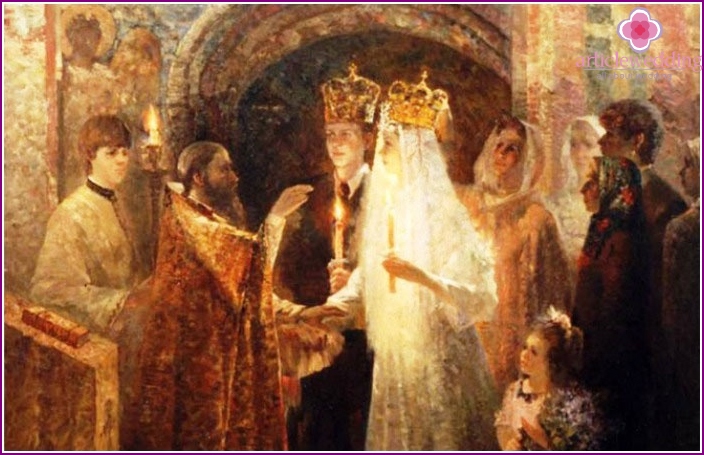
Many wedding ceremonies in ancient Russia had a magical background. Before the priest forever united the souls of lovers, the future husband and wife were considered vulnerable to evil forces. Many rituals were conducted to help young people avoid the evil eye, damage: for example, sweeping the road in front of the bride and groom. The rite ruled out the possibility that the spouses would throw something under their feet that attracted evil spirits to the new family. Crossing their path was also considered a bad omen.
In ancient times, a wedding was celebrated for several days. The first day was full of events: the bride was prepared for the soon arrival of the bridegroom, the dowry was transported, then the future spouses received a blessing, went to the wedding feast. A large-scale wedding feast took place the next day, after the rite of church wedding. During the wedding, the groom had to remain silent, so the responsibility for performing the wedding rituals lay with a friend (a relative or friend of the groom).
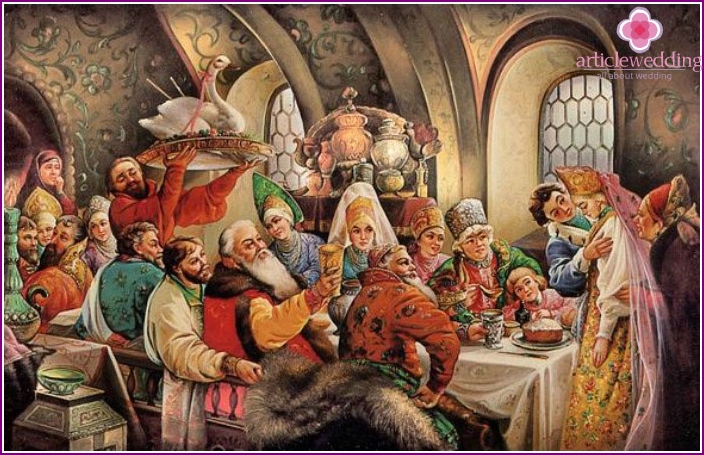
To avoid spoilage, the custom ordered the young people to sleep in a new place - for the wedding night they were preparing a sennik, the decoration of which was icons, arrows in the four corners with martens on them, a bed of twenty-one sheaves. During the wedding feast, the newlyweds drank and ate little, and brought the last meal to their bed. In the morning, using an arrow, they lifted a blanket, checking if the bride was innocent, getting married.
Matchmaking and wedding preparations
Before the wedding, there were several ancient rites. The first was matchmaking, when relatives and friends of the groom came to the bride's parents, praised him, talked about the virtues. To make the meeting a success, the matchmakers and matchmakers traveled in a roundabout way, obfuscating the tracks - this was protection from the dark forces. For the first time, the parents of the bride should have refused the matchmakers, despite the preliminary agreement between the families about marriage.
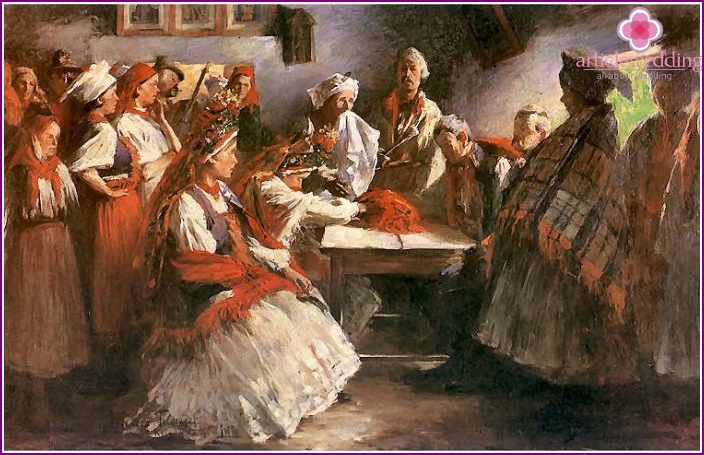
After the affirmative answer was given to the matchmakers, another important rite was held - bridegrooms. It was an inspection of the chosen one’s clothes, dishes, the general condition of the household. In the old days, bridegrooms could change the decision of parents to marry a daughter - a person who is not rich enough to provide for her, was refused.
If the bride went well, and the girl’s relatives were satisfied with the financial situation of the future spouse, a day was appointed when the family officially announced its decision - then nothing could interfere with the wedding, except for unforeseen force majeure circumstances. In Russia, it was customary to talk about betrothal during a feast in the presence of many guests.
On the eve of the celebration, the girl with her friends needed to visit the bathhouse. There they washed, sang songs, talked. After the bath, the bachelorette party continued, at which rituals of protection from the dark forces were held - the girlfriends described the life of the bride and her husband gloomy, unhappy. It used to be that this would scare away unclean spirits. Girls spent night fortune-telling by candlelight, led round dances, performed ritual rites of strengthening ties with their future husband.
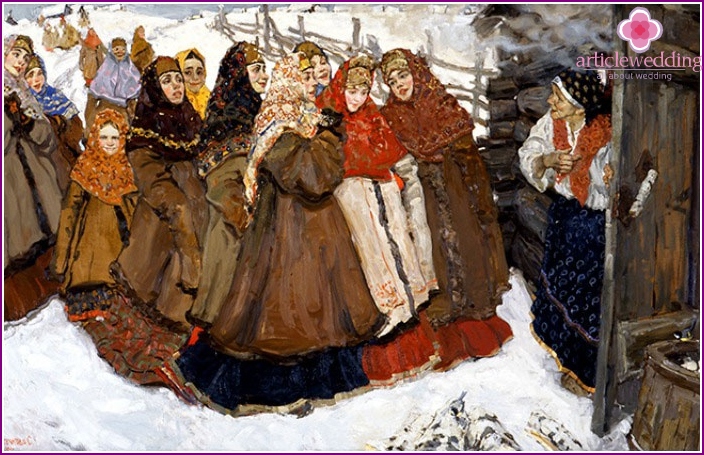
The braiding of the braid by the narrowed girlfriends and weaving of two braids instead of it is an important wedding ceremony in the list of familiar ones in Russia, which was carried out on the eve of the ceremony. It symbolized the bride’s farewell to girlhood, her becoming like a woman, her readiness to conceive a child.
The groom also visited the bath before the wedding, however alone. Unlike the narrow-minded, who had to spend the whole evening talking with friends, wondering and dancing, he had to remain silent.
Ancient blessing ceremony
The Orthodox rite of parental blessing, held in antiquity, was considered one of the most important wedding events. Couples broke up if they were denied a blessing ritual. It was held like this: future spouses before the wedding came to the courtyard of the bride’s parental home, where mother and father met them with bread and salt and were baptized with icons wrapped in a towel. Read more about the rite in the photo below..
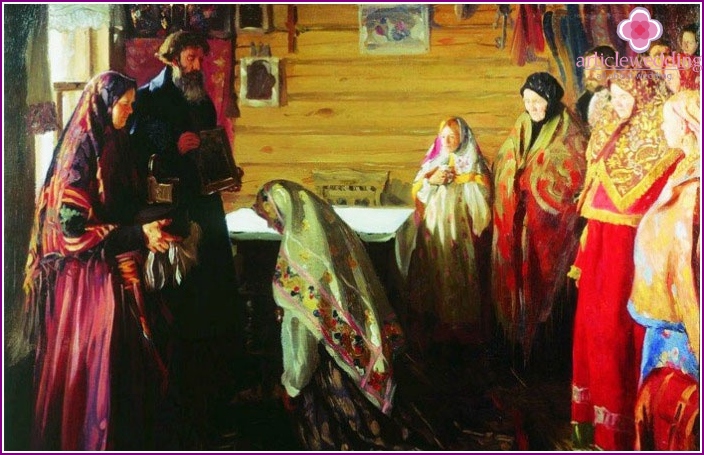
Wedding feast
Young people should refrain from drinking and eating at the wedding table. They accepted gifts and congratulations, and during the last meal (usually it was fried), they went to the sennik, where they spent their wedding night. Guests were allowed to wake the newlyweds several times a night to call them to the table again.
In the morning, when most of the hungry guests left the feast, covered «sweet table». After him, the newlyweds went to wash, and the sheet or shirt of the bride was often shown to the villagers, proving girl's innocence.
The third day of the wedding was difficult for the wife - she needed to show her abilities as a hostess: to melt the stove, cook dinner, wash the floors, and the guests tried to prevent her in different ways.
A peasant wedding usually lasted three days. Married were called «the prince» and «princess», because the mystery of the wedding ceremony in this perspective in Russia was like raising the princes to the dignity of power.
Traditional wedding songs
Without traditional wedding songs, not a single celebration was held. They accompanied the pre-wedding ceremonies and several holidays. Watch the video on which traditional wedding songs of Russia are performed:
- Russian folk wedding song:
- «Loach over the water»:
Many wedding rites and customs have lost their original meaning, and the attitude of modern people to ancient rites has changed - often weddings are limited to painting in the registry office. But some couples continue to observe the ancient traditions of the celebration, paying tribute to the rich past of our country.
What wedding rites of Russia did you find interesting? Maybe you were a participant in such a wedding? Tell us about it in the comments..

